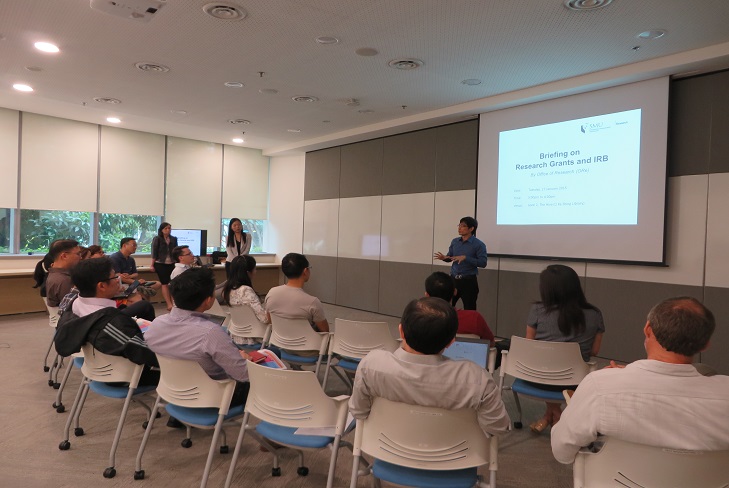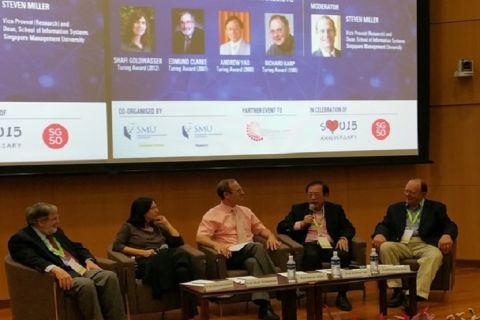
On 27 January 2015, the Office of Research (ORe) conducted its inaugural briefing on research grant administration and Institutional Review Board (IRB) for new faculty members at The Hive @ Li Ka Shing Library.
Kicking off with an introduction to the research landscape in Singapore, the first half of the briefing provided an overview on how ORe support the Schools and faculty members on research-related matters, namely research administration, institutional review board application and approval, research outreach and communication. As the primary liaison and facilitator between the Schools and funding agencies or research partners, ORe plays a key role in all stages of the grant management process throughout the grant life cycle.
The second half of the briefing touched on the roles and responsibilities of SMU IRB. Responsible for safeguarding ethics in research involving human subjects, the IRB reviews, modifies, and approves research protocols with the aim of protecting the rights and welfare of researchers and participants. To educate the SMU community on best IRB practices, the IRB conducts biannual briefing sessions and provides updates on IRB policies and procedures. During these sessions, the IRB Chairman or Vice Provost (Research) would be present to take questions from the floor.
In addition, since 1 July 2014, the IRB has implemented the Collaborative Institutional Training Initiative (CITI), an online training programme that offers a variety of courses on the protection of human subjects in research. Those interested in submitting IRB applications are required to complete the basic course “IRB Training for SMU Researchers” prior to submission.
Attended by 15 faculty members, the briefing was interspersed with lively interaction as they posed questions on grant opportunities and applications, success factors of awarded projects as well as the CITI programme.
See More News
Want to see more of SMU Research?
Sign up for Research@SMU e-newslettter to know more about our research and research-related events!
If you would like to remove yourself from all our mailing list, please visit https://eservices.smu.edu.sg/internet/DNC/Default.aspx

